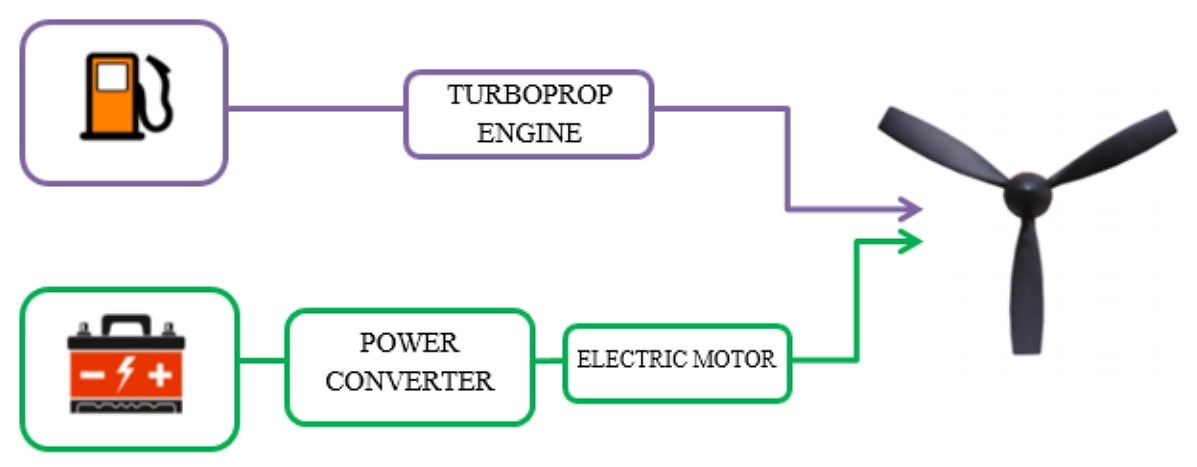Current issue
Online first
Archive
About the Journal
Aims and scope
Publisher and Editorial
Advertising policy
For Authors
Paper review procedures
Procedures protecting authentic authorship of papers
Paper preparation manual
Plagiarism check
Publication ethics
Reviewers
APC
Editorial and Scientific Board
Contact
Reviewers
Analysis of the performance of an aircraft powered by hybrid propulsion
1
Department of Aerospace Engineering, Head of Department, Rzeszow University of Technology, Poland
2
Faculty of Mechanical Engineering and Aeronautics, Rzeszow University of Technology, Poland
Submission date: 2022-07-17
Final revision date: 2023-01-15
Acceptance date: 2023-02-10
Online publication date: 2023-04-16
Publication date: 2023-06-14
Corresponding author
Andrzej Majka
Department of Aerospace Engineering, Head of Department, Rzeszow University of Technology, 12, Powstancow Warszawy, 35-959, Rzeszów, Poland
Department of Aerospace Engineering, Head of Department, Rzeszow University of Technology, 12, Powstancow Warszawy, 35-959, Rzeszów, Poland
Combustion Engines 2023,193(2), 45-51
KEYWORDS
TOPICS
ABSTRACT
Travel is an inseparable part of human life. It is connected not only with private life but also with business life. People want to travel more, farther and faster. That is why air transport is currently one of the fastest-growing areas of passenger transport, and airlines carry more and more passengers from year to year. Due to the growing negative impact of air transport on the natural environment, research aimed at the development of technologies to reduce the negative impact of air transport is becoming more and more important. One of the possibilities for improving the situation is the use of alternative energy sources, limiting the emission of greenhouse gases into the atmosphere. The paper aimed to analyze the meaningfulness of replacing the classic power unit in a light transport aircraft with a hybrid, combustion-electric power unit. Analyzes were made with the use of simulation methods for the PZL M-28 aircraft.
REFERENCES (22)
1.
International Civil Aviation Organization (ICAO). ICAO website. https://www.icao.int (accessed on 06.2022).
2.
Eurocontrol Forecast Update 2021-2027, European Flight Movements and Service Units – Three Scenarios for Recovery from COVID-19. Eurocontrol edition, 15th October 2021. https://www.eurocontrol.int/si....
3.
Pornet C, Isikveren AT. Conceptual design of hybrid-electric transport aircraft. Prog Aerosp Sci. 2015;(79):114-135. https://doi.org/10.1016/j.paer....
4.
Guillot JD. Emissions from planes and ships: facts and figures. Directorate General for Communication, European Parliament. 2022. https://www.europarl.europa.eu.
5.
Staples MD, Malina R, Suresh P, Hileman JI, Barrett SRH. Aviation CO2 emissions reductions from the use of alternative jet fuels. Energ Policy. 2018;(114):342-354. https://doi.org/10.1016/j.enpo....
6.
Larsson J, Kamb A, Nässén J, Åkerman J. Measuring greenhouse gas emissions from international air travel of a country’s residents methodological development and application for Sweden. Environ Impact Assess. 2018;(72): 137-144. https://doi.org/10.1016/j.eiar....
7.
Chao H, Agusdinata DB, Delaurentis D, Stechel EB. Carbon offsetting and reduction scheme with sustainable aviation fuel options: Fleet-level carbon emissions impacts for U.S. airlines. Transportation Res D-TR E. 2019;(75):42-56. https://doi.org/10.1016/j.trd.....
8.
Strouhal M. Corsia – Carbon Offsetting and Reduction Scheme for International Aviation. Magazine of Aviation Development. 2020;8(1):23-28. https://doi.org/10.14311/MAD.2....
9.
Saynor R, Bauen A, Leach M. The potential for renewable energy sources in aviation. Imperial College Centre for Energy Policy and Technology. 2003. http://www.iccept.ic.ac.uk.
10.
Baroutaji A, Wilberforce T, Ramadan M, Olabi AG. Comprehensive investigation on hydrogen and fuel cell technology in the aviation and aerospace sectors. Renew Sust Energ Rev. 2019;106:31-40. https://doi.org/10.1016/j.rser....
11.
Gogolák L, Csikós S, Molnár T, Szuchy P, Bíró I, Sárosi J. Possibilities of optimizing fuel consumption in hybrid and electronic airplanes. The Analecta Technica Szegedinensia. 2019;13(2):65-76. https://doi.org/10.14232/anale....
12.
Finger DF, Bil C, Braun C. Initial sizing methodology for hybrid-electric general aviation aircraft. J Aircraft. 2020;57(2):245-255. https://doi.org/10.2514/1.C035....
13.
Voskuijl M, Van Bogaert J, Rao AG. Analysis and design of hybrid electric regional turboprop aircraft. CEAS Aeronautical Journal. 2018;9(1):15-25. https://doi.org/10.1007/s13272....
14.
Finger DF, Braun C, Bil C. Impact of battery performance on the initial sizing of hybrid-electric general aviation aircraft. J Aerospace Eng. 2020;33(3):04020007. https://doi.org/10.1061/(ASCE)....
15.
Drop N. Airbus’ electrically powered aircraft as an answer to the European Union’s low-carbon policy. Transport Economics and Logistics. 2019;(81):81-89. http://dx.doi.org/10.26881/eti....
16.
Sudha B, Vadde A, Sachin S. A review: high power density motors for electric vehicles. J Phys Conf Ser. 2020;1706(1). https://doi.org/10.1088/1742-6....
17.
Schäfer AW, Barrett SRH, Doyme K, Dray LM, Gnadt AR, Self R et al. Technological, economic and environmental prospects of all-electric aircraft. Nature Energy. 2019;4(2):160-166. http://dx.doi.org/10.1038/s415....
19.
Jaroszyński L. Akumulatory litowe w pojazdach elektrycznych. Przegląd Elektrotechniczny. 2011;87(8):280-284. ISSN 0033-2097.
20.
Li S, Gu C, Xu M, Li J, Zhao P, Cheng S. Optimal power system design and energy management for more electric aircrafts. J Power Sources. 2021;512:230473. https://doi.org/10.1016/j.jpow....
21.
Li S, Gu C, Zhao P, Cheng S. A novel hybrid propulsion system configuration and power distribution strategy for light electric aircraft. Energ Convers Manage, 2021;(238): 114171. https://doi.org/10.1016/j.enco....
22.
Fuć P, Kardach M, Maciejewska M. Analysis of the availability of aircrafts with alternative propulsions. Combustion Engines. 2019;179(4):220-225. https://doi.org/10.19206/CE-20....
CITATIONS (2):
1.
Analysis of simulated dynamic loads of a ship propulsion system
of a non-conventional power system
Ryszard Zadrąg, Paweł Socik, Tomasz Kniaziewicz, Marcin Zacharewicz, Artur Bogdanowicz, Paweł Wirkowski
Combustion Engines
Ryszard Zadrąg, Paweł Socik, Tomasz Kniaziewicz, Marcin Zacharewicz, Artur Bogdanowicz, Paweł Wirkowski
Combustion Engines
2.
Exhaust emissions from a jet engine powered by sustainable aviation fuel calculated at various cruising altitudes
Paula Kurzawska-Pietrowicz, Marta Maciejewska, Remigiusz Jasiński
Combustion Engines
Paula Kurzawska-Pietrowicz, Marta Maciejewska, Remigiusz Jasiński
Combustion Engines
Share
We process personal data collected when visiting the website. The function of obtaining information about users and their behavior is carried out by voluntarily entered information in forms and saving cookies in end devices. Data, including cookies, are used to provide services, improve the user experience and to analyze the traffic in accordance with the Privacy policy. Data are also collected and processed by Google Analytics tool (more).
You can change cookies settings in your browser. Restricted use of cookies in the browser configuration may affect some functionalities of the website.
You can change cookies settings in your browser. Restricted use of cookies in the browser configuration may affect some functionalities of the website.



